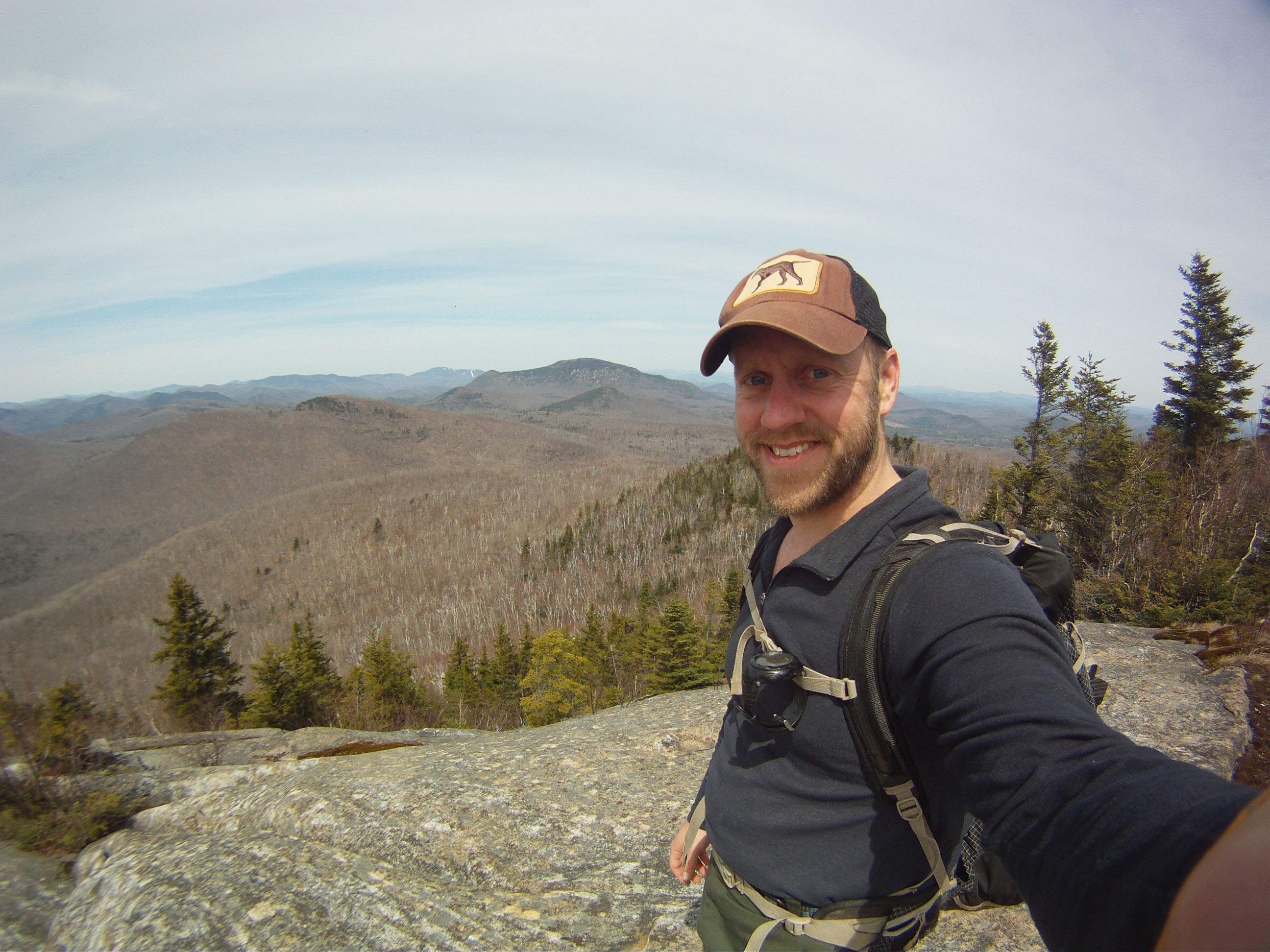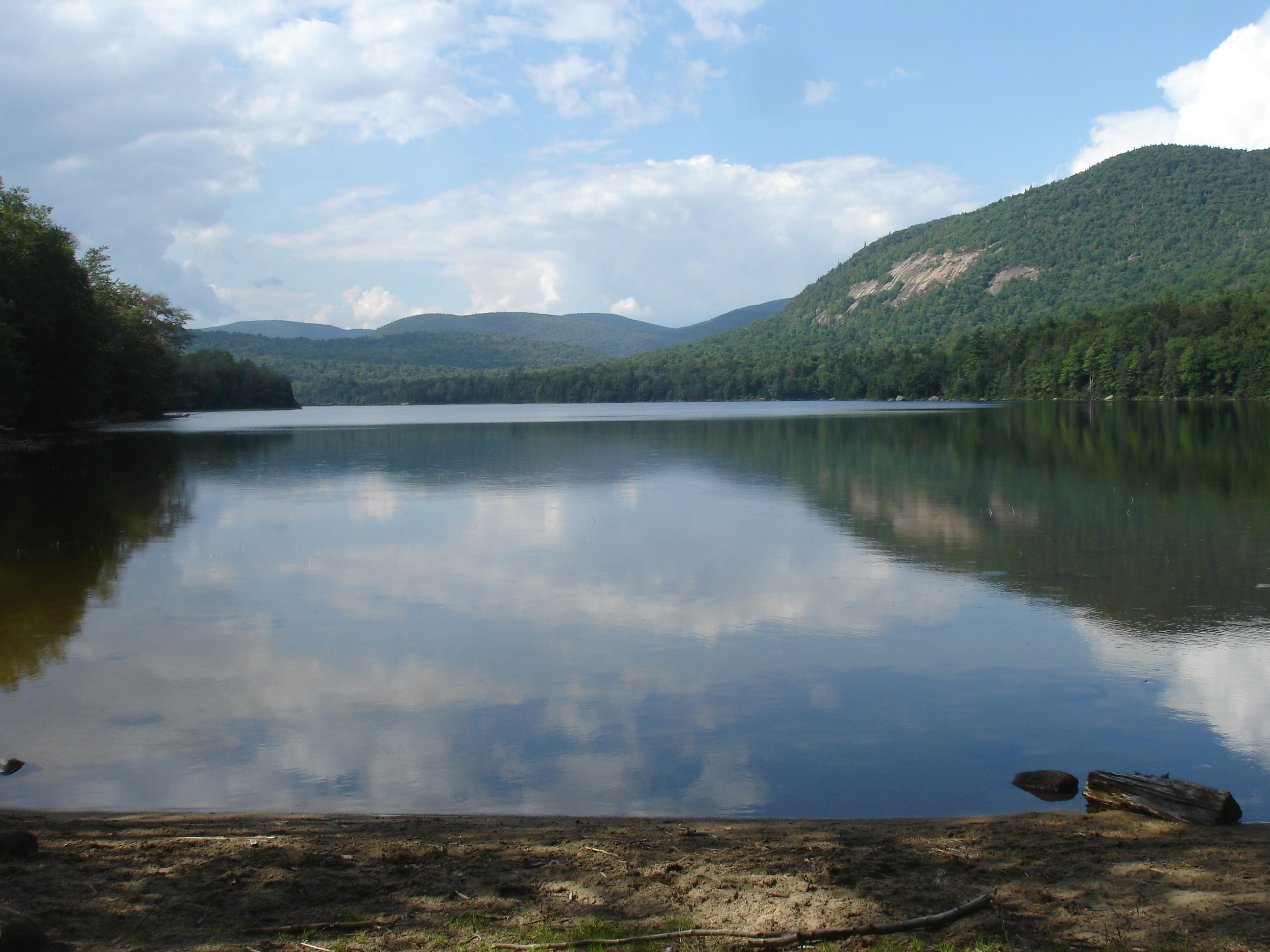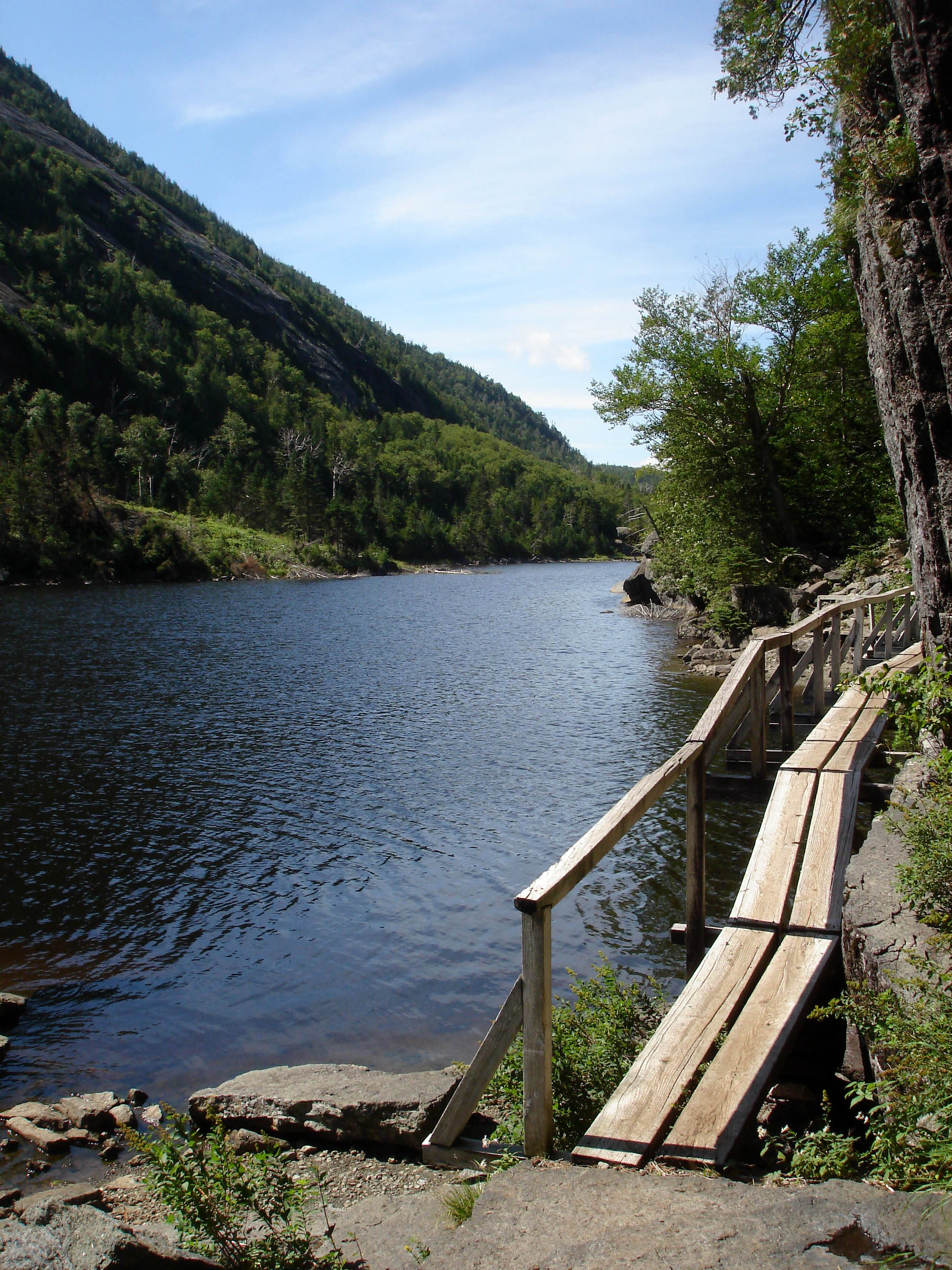Interviews & Profiles
Erik Schlimmer: The Trans-Adirondack Route
Dec 22, 2014
Erik Schlimmer is an avid East Coast adventurer who has hiked more than 10,000 miles, climbed more than 1,500 peaks, slept outside more than 1,000 nights. He created the Trans-Adirondack Route as an alternative hiking experience to the standard, peak bagging Adirondack experience that only focuses on the 46 High Peaks of the region. The Trans-ADK route, described by Schlimmer in Blue Line to Blue Line, traverses major wildernesses and much of the forgotten, and wildest, areas of the park.
***

RailRiders: When did you first start venturing into the Adirondack Park?
Erik Schlimmer: During the early 1980s my parents started vacationing in the central Adirondacks, having us stay in a little cabin by a pond. So I suppose you could say I've been exploring the Adirondacks since I was nine years old, in 1982. That's 32 years ago.
RR: What are some of your favorite early memories and places that caused you to fall in love with the Park?
ES: Being in a kid on vacation in the Adirondacks was lovely because every little thing seemed like an adventure. Staying inside a cabin that was pitch-black at night, running up and down hills, going canoeing, stalking bullfrogs, playing at a sandpit, cooking over an open fire. For a nine-year-old from the urban environment this was really far out stuff.
RR: What makes the Adirondack Park unique?
ES: Two things make the Adirondack Park what it is: its size and its land ownership. The Adirondack Park is the largest forest preserve and park in the Lower Forty-Eight – about six million acres, nearly the size of Vermont [it is the size of Yellowstone, Yosemite, and the Grand Canyon combined]. It is a nearly-unique ("nearly" because its smaller sister park, the Catskill Park, has this same design) quilt work of private and public land, and this ownership is split about fifty-fifty. Therefore, we have enormous tracts of wild, public lands, but you can live and work in the park.
RR: Despite its massive size, do you have a favorite place?
I like to go where few others go. While it seems everyone else is going to the High Peaks, I spend most time in the central Adirondacks among the trailless, lower peaks.

RR: How did your time in the military influence your desire to spend much of your adult life outside?
ES: It's funny because the military made me despise backpacking! Look at what they did to intelligence and music. Shameful. Now imagine them doing the same thing to backpacking. I was in the light infantry – a paratrooper. But, trust me, there is no "light" in infantry.
RR: Can you tell us about your “reverse-retirement plan?”
ES: The Reverse Retirement Plan developed naturally. During my 20s I found myself attending school one semester of the year and working and adventuring the rest of the year. I loved the freedom and independence of that lifestyle and just ran with it. I lived the Reverse Retirement Plan from about the age of 25 to 40. It was a wild ride. Some of the more challenging and rewarding adventures include mountain biking the entire U.S.-Mexico border end-to-end, climbing the Northeast's 770 peaks above 3,000 feet, and climbing the South's 198 peaks above 5,000 feet.
RR: When did you get the idea to create a trans-Adirondack route?
ES: The story of the Trans Adirondack Route begins in 2005. Up until that year I had done a lot of off-trail travel in the Northeast, and I had hiked a handful of long-distance trails throughout the U.S. I assumed that combining these two pursuits would be a good idea. So in 2005 I planned to traverse the entire Adirondack Park without the use of trails – it was going to be all off-trail. But then, at the last moment, I cancelled this trip. To be honest, it sounded too challenging.
In 2010 I revisited this idea of traversing the Adirondack Park. But this time I planned on using trails. In August of that year I hiked across the entire park by combining paved roads, dirt roads, abandoned paths, hiking trails, snowmobile trails, and a few off-trail sections.
During this hike I had no intention of sharing my route. But when I reached the end, I said to myself, “I bet someone else would like to hike it.” I named my route the Trans Adirondack Route, and during the past few years I developed a website, wrote a guidebook and place name book, and produced a map set so others can follow my footsteps. So far we have seen a dozen attempted thru-hikes and four successes.
RR: What are some of the highlights and most challenging sections of the route?
ES: One highlight includes an ascent of Whiteface Mountain. At nearly 5,000 feet, this is the fifth highest peak in New York State. The route also traverses the two biggest wilderness areas in the Northeast: High Peaks and West Canada Lake wilderness areas. They're each nearly 200,000 acres each. Throw in five life zones, two other peaks, a half-dozen other wilderness areas, rivers, ponds, first growth forests, and serious solitude. The toughest sections are the off-trail segments. But still, the longest one is only two miles.

RR: You are specific to describe it as a route, not a trail. What is the difference? How would you compare the 235-mile long Trans Adirondack Route to other trails, such as the 270-mile Vermont Long Trail?
ES: A route is a pathway that is usually pieced together and not officially marked on the ground. There may be some off-trail travel, river fords, long stretches without shelters or resupply points, etc. – things you may not experience much on other long trails. Routes are designed for experienced backpackers seeking a serious wilderness experience. Let's put it this way: The route currently has a 66% thru-hiker failure rate, and that includes at least one person who was fresh off a successful thru-hike of the Appalachian Trail.
The biggest difference between the Trans Adirondack Route and the Long Trail, and most other long-distance trails, is that the Trans Adirondack Route doesn't climb that much. The Long Trail is only thirty miles longer but climbs nearly triple the amount of vertical feet.
RR: What tips would you have for anyone trying to tackle this route?
ES:
1. Leave all your technological gizmos at home.
2. Go light.
3. Always know exactly where you are.
4. Leave as little impact on the natural environment as possible.
5. Do not follow or listen to incompetent leaders.
6. Never exceed your abilities.
7. Be aware of your surroundings at all times.
8. Be nice.
9. Stay dry.
10. Have fun.
More information about the Trans-Adirondack Route can be found on its official website, www.transadk.com.
